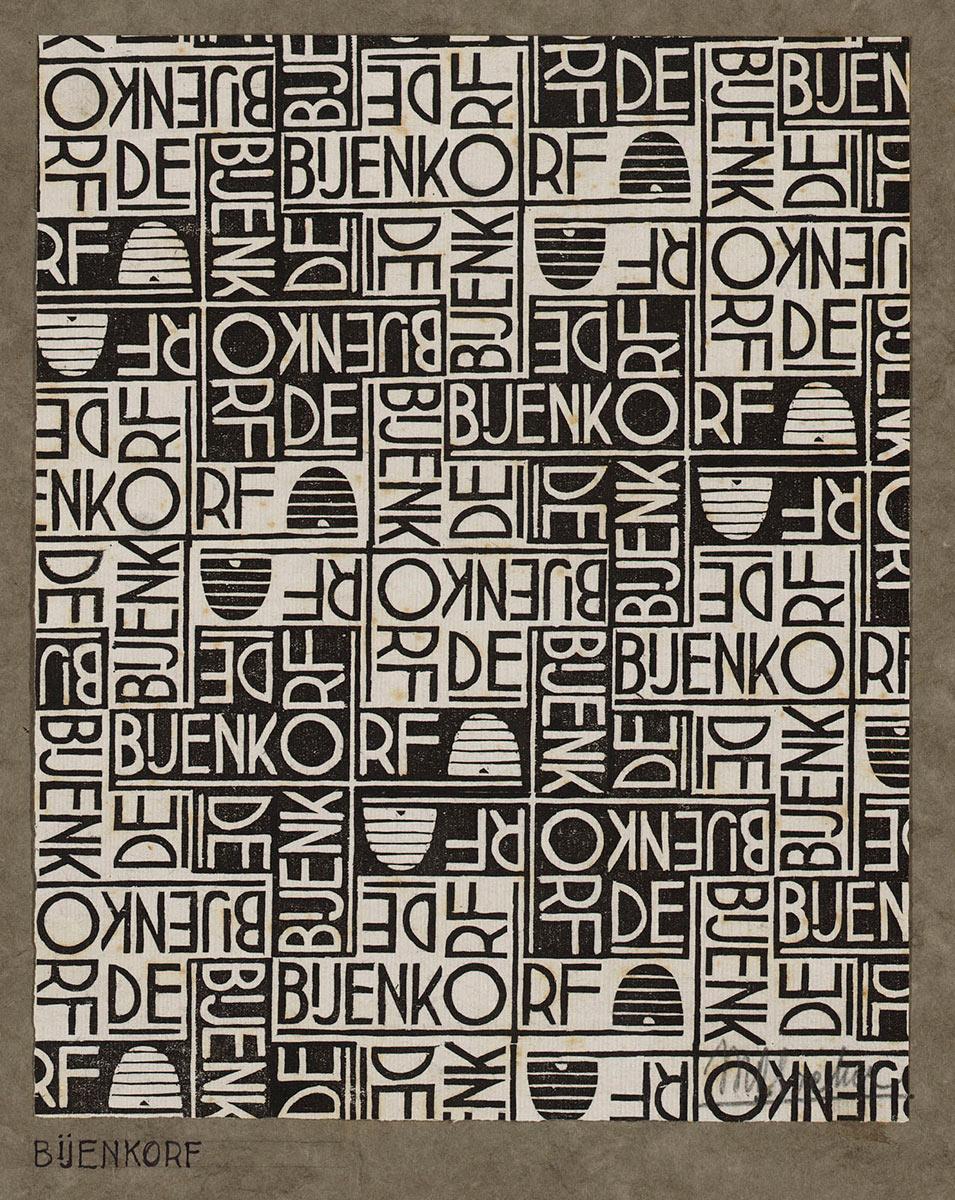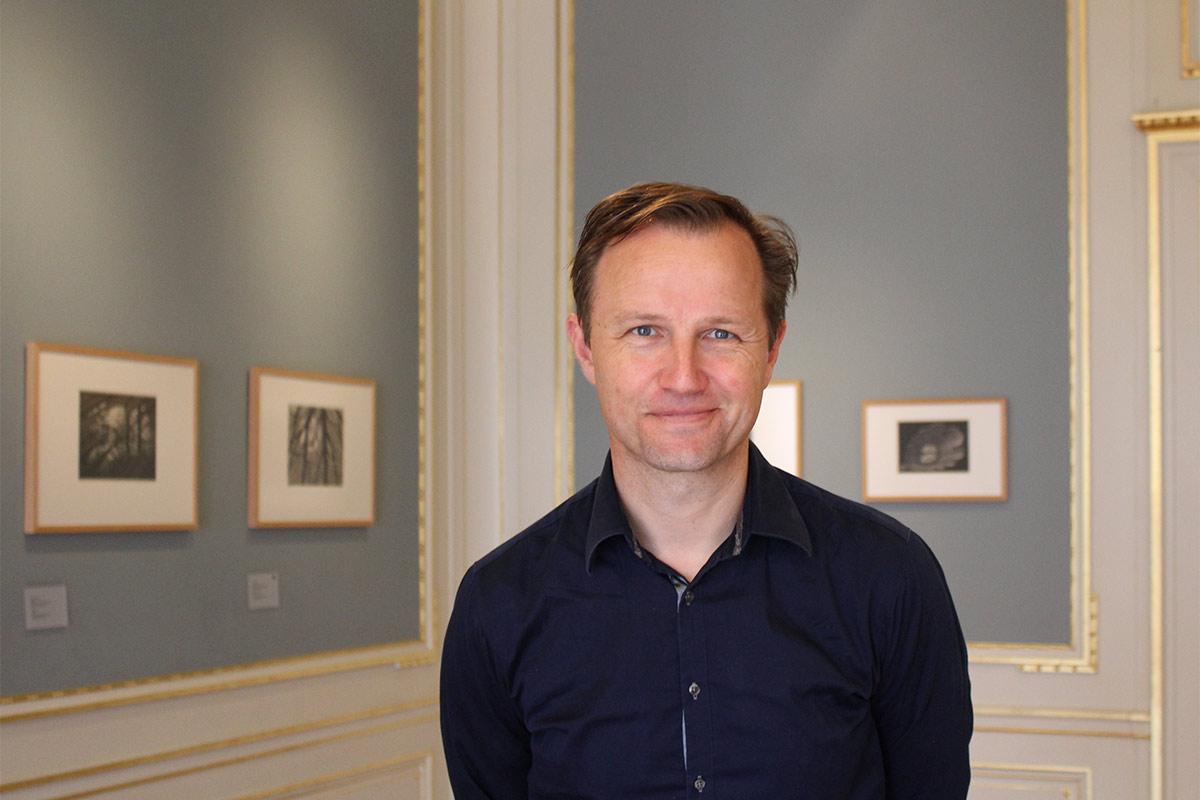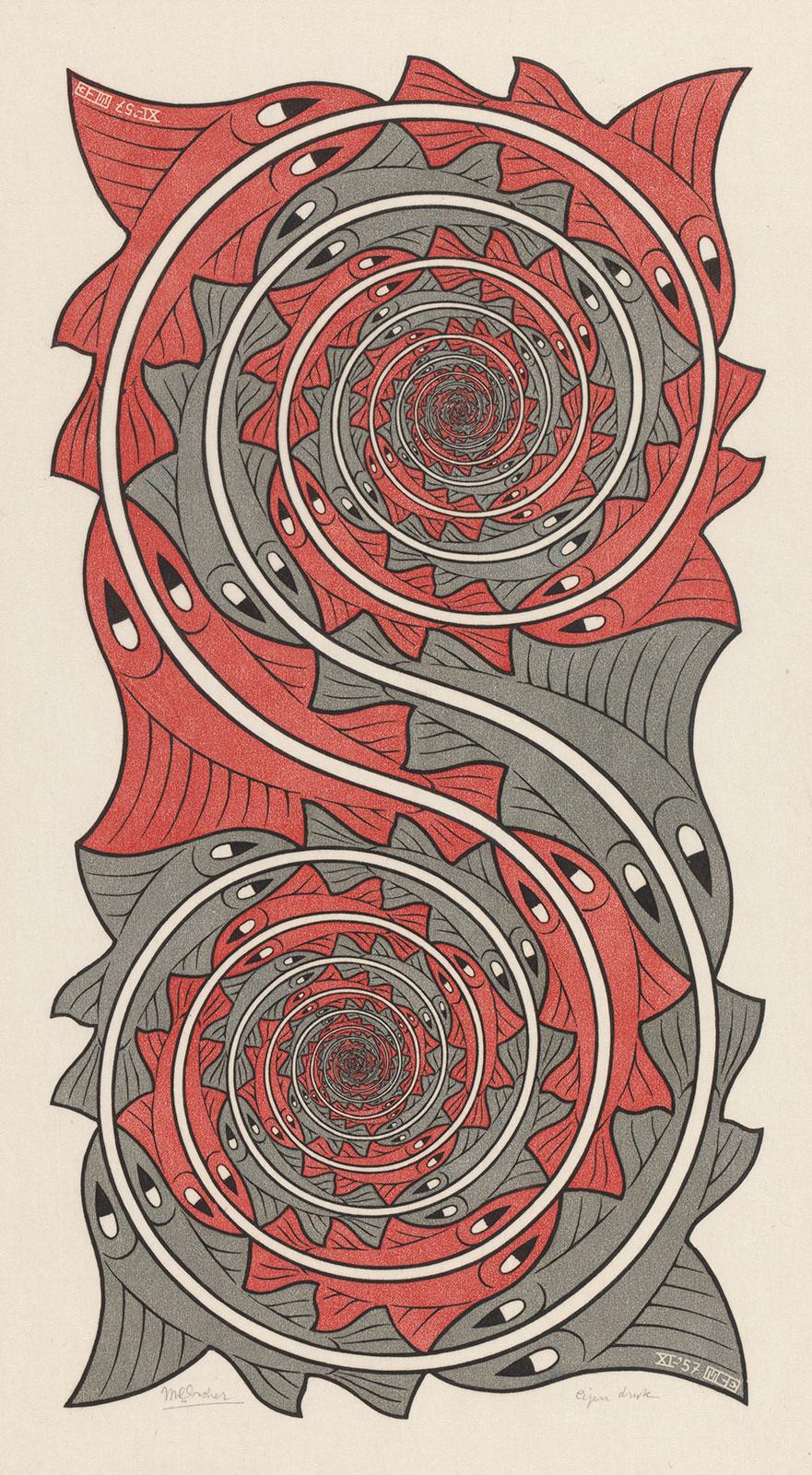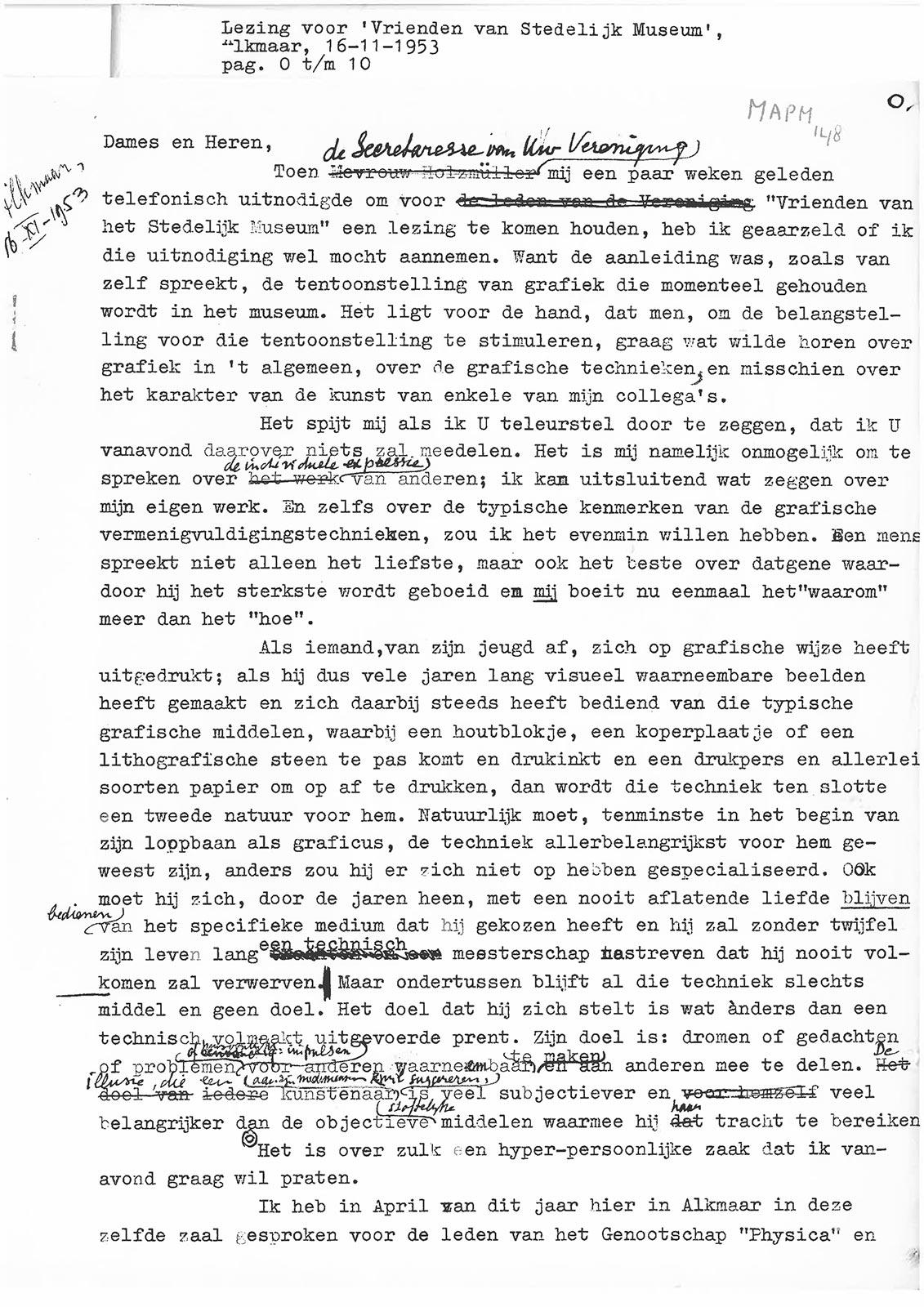

Although he was fascinated by the concept of the regular division of the plane even early on in his career, it was not until 1936 that Escher tackled it in earnest. A period ensued in which he performed countless experiments with ways of filling a plane with patterns of geometric shapes. He did this in the form of drawings which he did in a notebook with a view to mastering the research process.
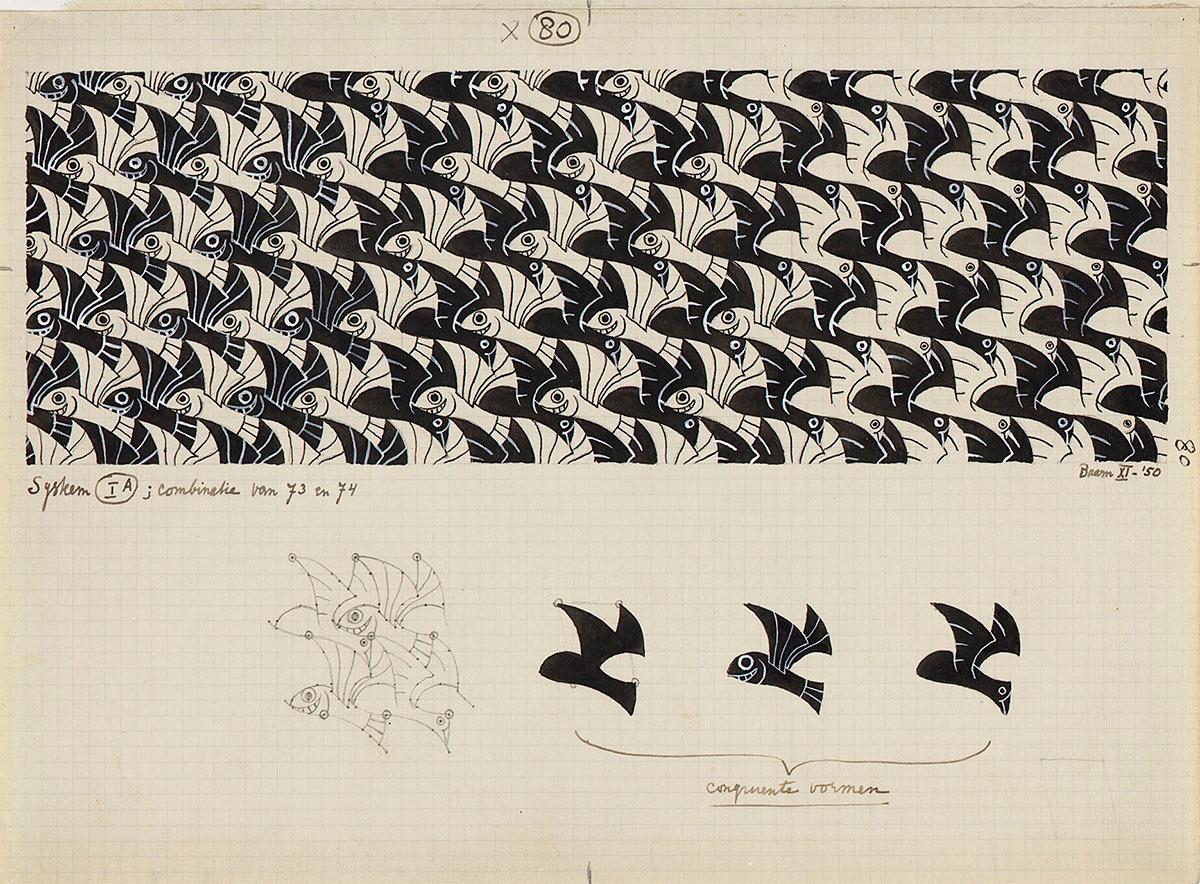
In this process (and this embodies Escher’s virtuosity) he managed to bend these geometric shapes into recognisable forms. Crudely at first, but as he got more adept at it, the fish, birds, lizards, beetles, butterflies, horses and other animals and shapes kept getting more refined. The drawings were a means of exploration, but he also drew ideas from it for new works or commercial assignments. They are numbered rather than entitled. In November 1950 he did this drawing, number 80. It is a combination of numbers 73 and 74 in which he shows how a shape can be both a bird and a fish. The drawing formed the basis of his lithograph Predestination.
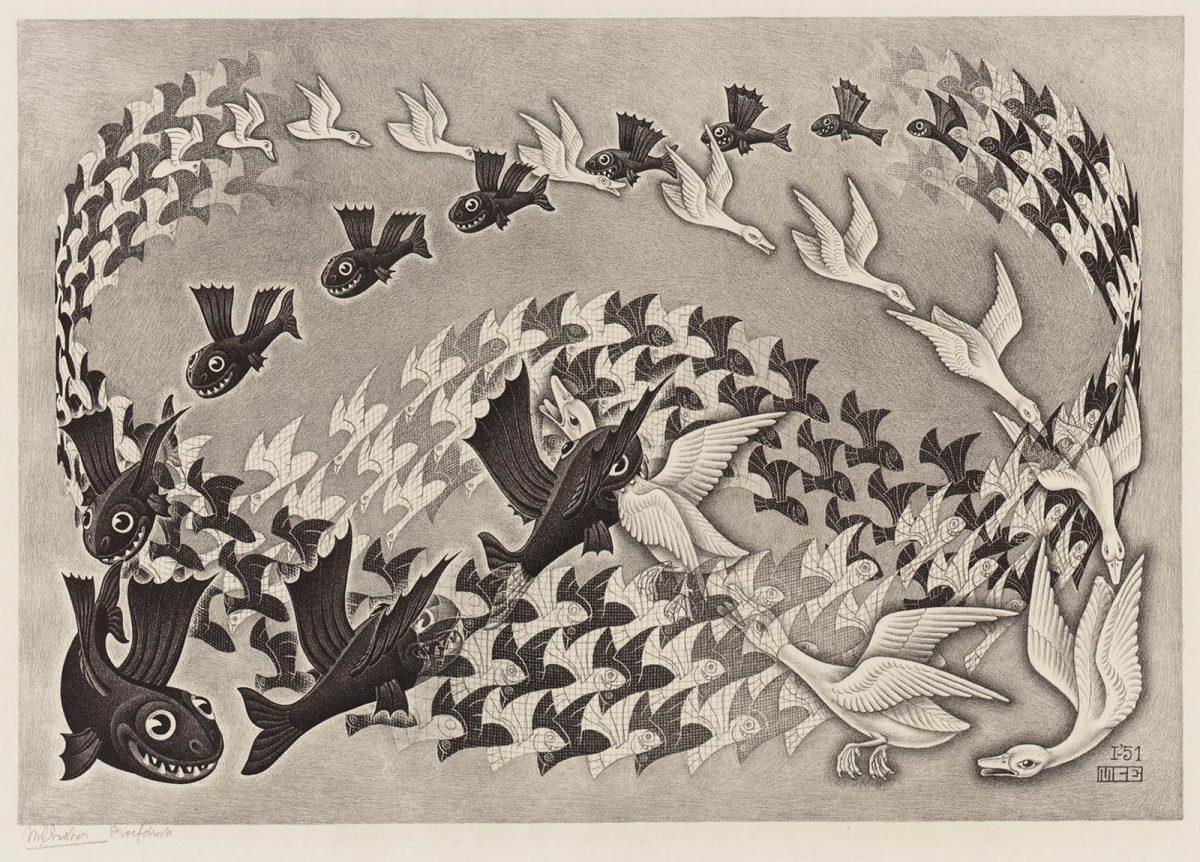
According to Dr Doris Schattschneider, an expert on Escher’s tessellations, Escher’s discovery of Pólya’s 17-plane symmetry groups, along with the definition of ‘the regular division of the plane’ in a paper written by Professor F. Haag in 1923, constitute the evolutionary breakthrough in the tessellated art of M.C. Escher. Read more about this connection in this story by former curator Micky Piller.
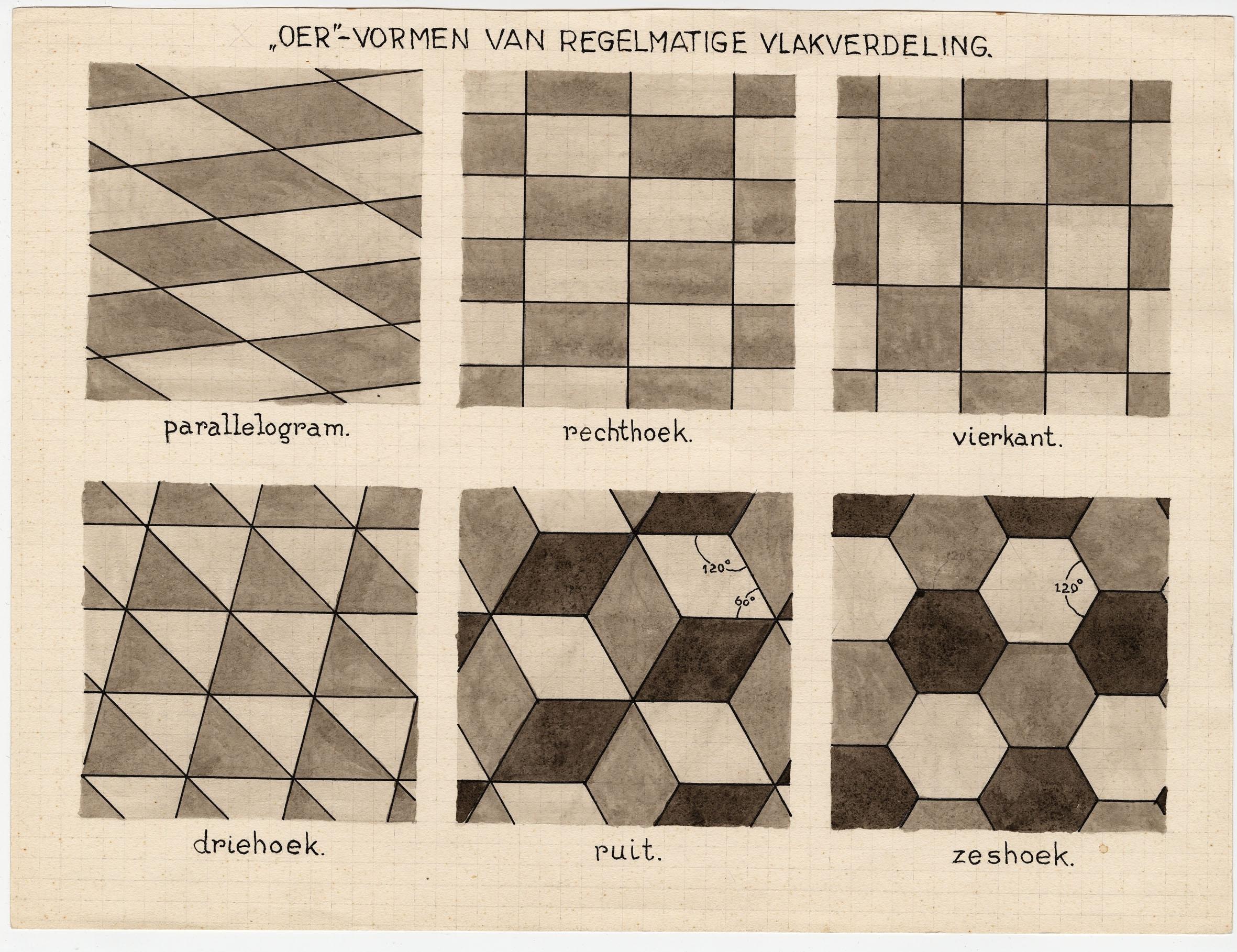
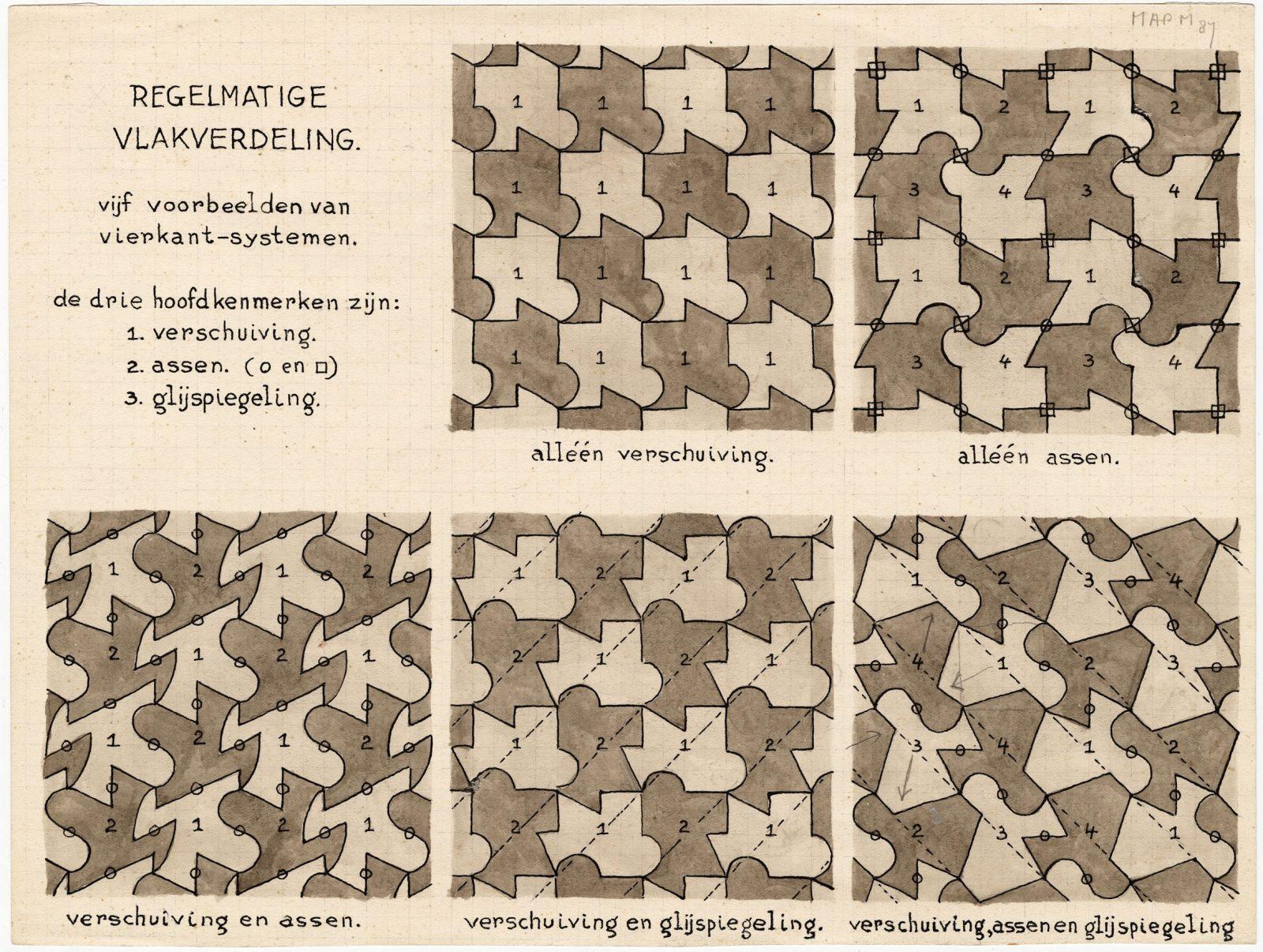

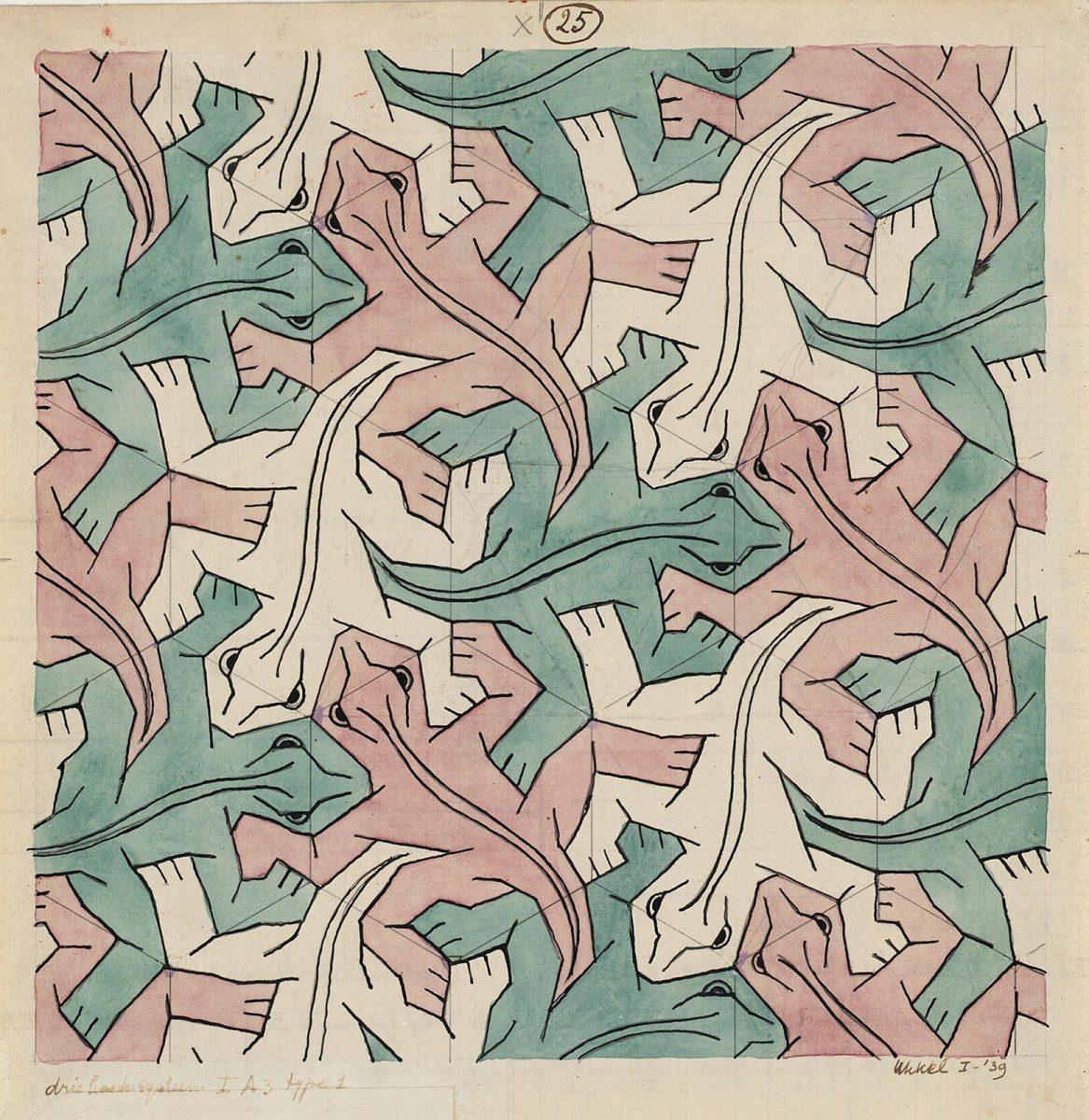

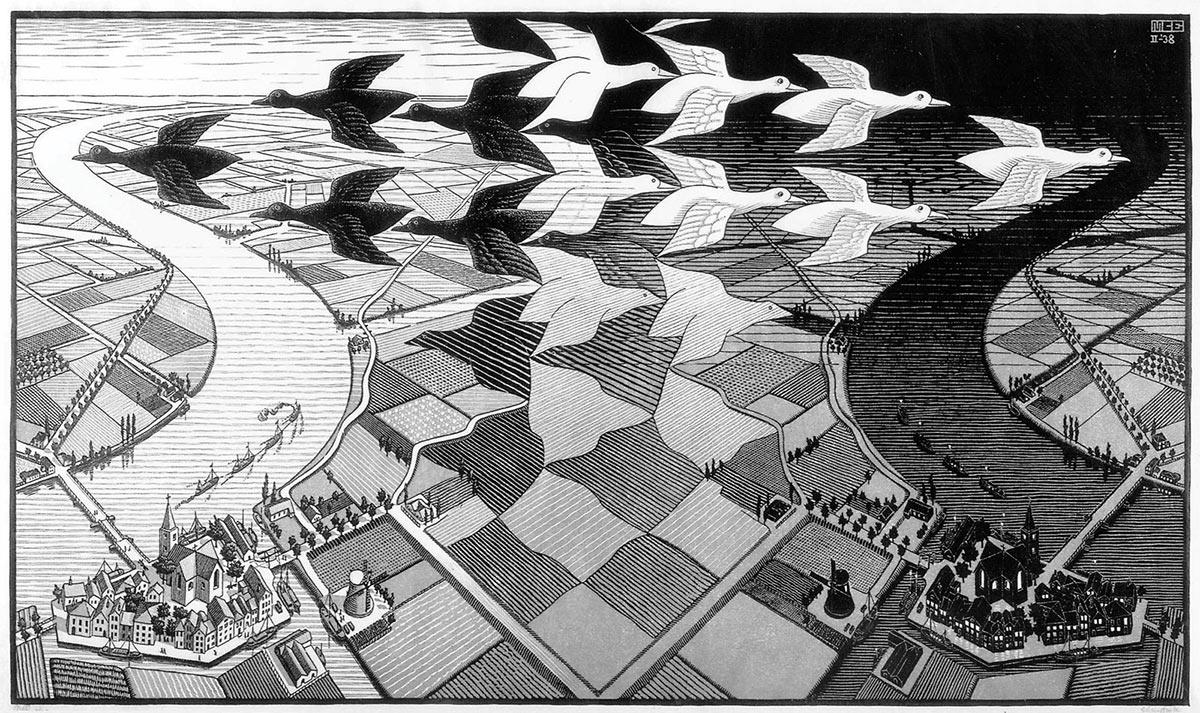
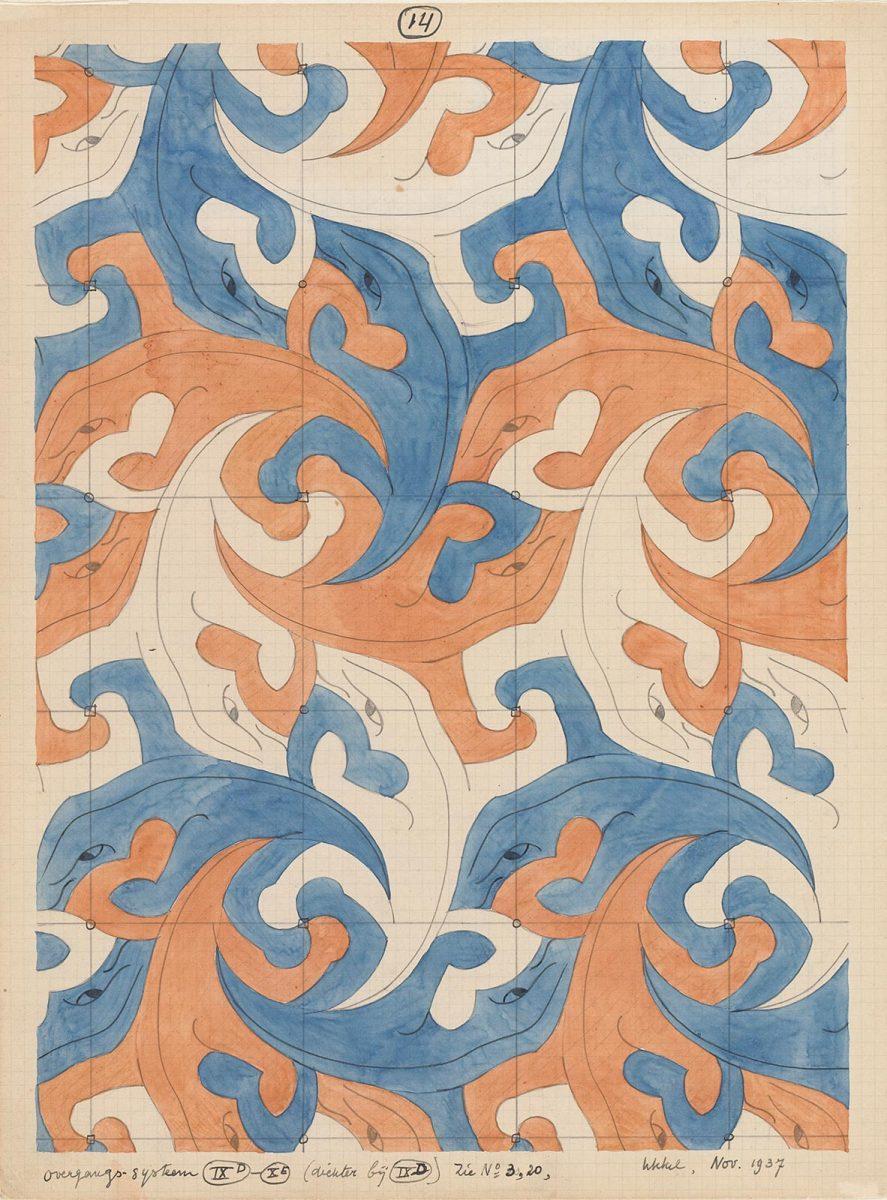
More Escher today

